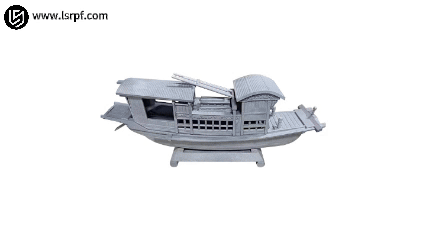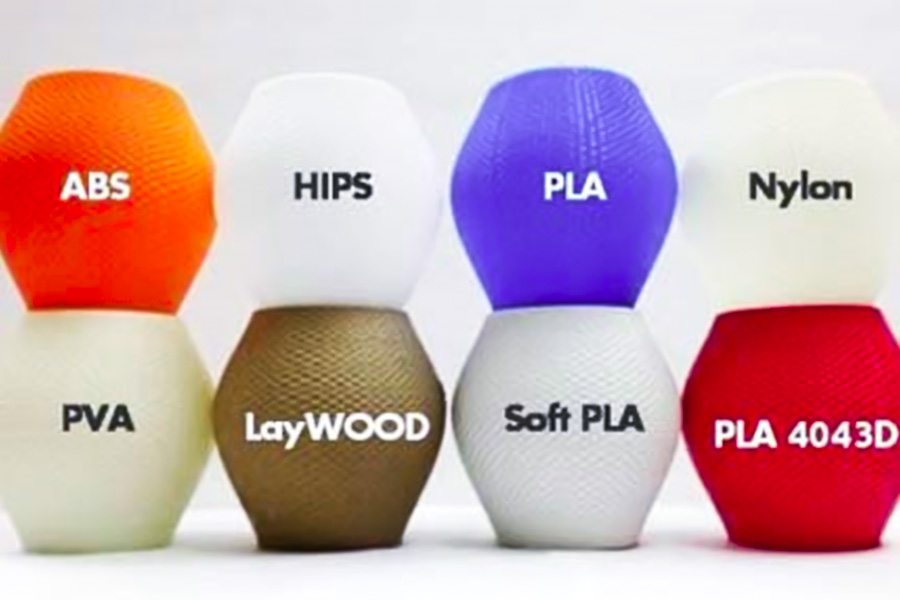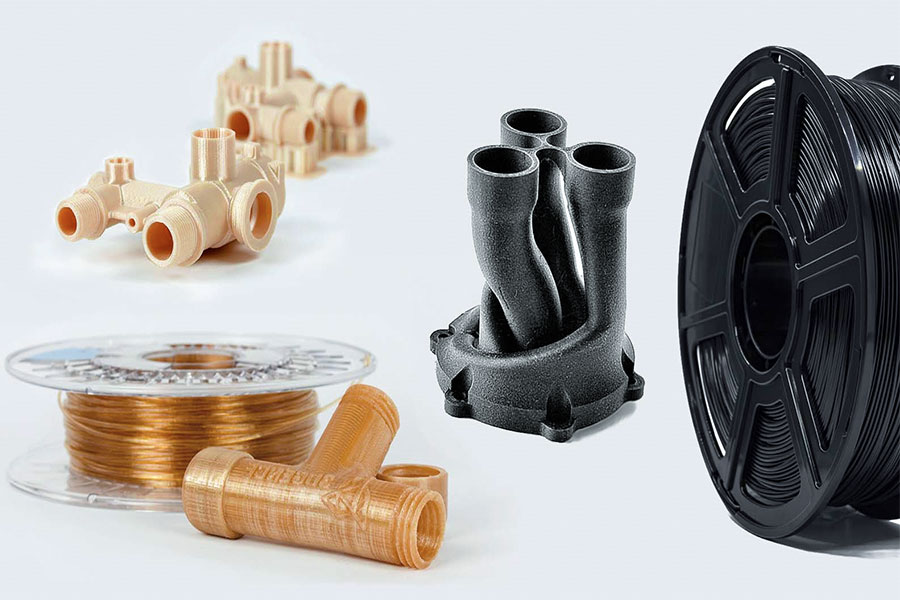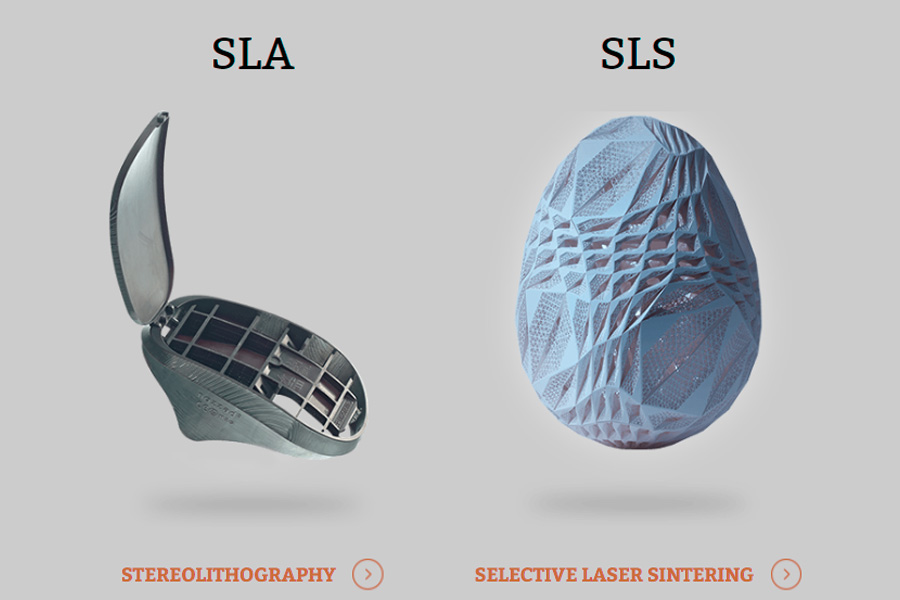Fused Deposition Modeling (FDM), or Fused Filament Fabrication (FFF), is an extremely popular method in 3D printing technology.The basic principle of the technology involves heating and extruding plastic filament to create a three-dimensional object by stacking it layer by layer on a printing platform. The reason why FDM technology can be widely used in many fields is largely due to its ability to achieve good compatibility with a variety of materials, especially thermoplastics. This article aims to elaborate on some of themost common materials used in fused deposition modeling processes.

What Materials Are Used in Fused Deposition Modeling (FDM)?
FDM printing technology mainly relies on a variety of plastic materials, from strong ABS and PLA to flexible TPE, which are widely used. In addition to plastics, FDM printers can also process materials such as metals, ceramics, and resins. In the field of construction, the process based on FDM technology is gradually maturing. Concrete is printed through an extruder, so that the entire building can be completed through 3D printing in a very short time, such as within a few days. In addition, FDM printers are capable of processing waxy materials and can print 3D models formetal investment casting. More cutting-edge experimental research has explored the possibility of printing more materials, including food and organic tissue materials, which have also been successfully printed using fused deposition modeling technology.
What Are the Most Common Thermoplastics Used in FDM?
In fused deposition modeling (FDM) technology, the followingthermoplasticsare widely used due to their unique properties:
PLA (polylactic acid)
PLA is one of the most commonly used materials in FDM 3D printingand is suitable for most printing needs. It is derived from natural plant resources, such as corn starch or sugar cane, and therefore has significant environmental advantages. PLA has a lower printing temperature and is suitable for beginners. The printed surface is smooth and post-processing is relatively simple. In addition, as a biodegradable material, PLA is environmentally friendly. However, PLA has poor heat resistance and may deform when exposed to high temperatures for a long time, making it unsuitable for high-temperature or high-load applications.
ABS (acrylonitrile butadiene styrene)
ABS is an engineering plastic widely used in FDM printingand has high mechanical strength and heat resistance. It is often used to make functional parts and complex components, and is suitable for products requiring high strength and durability. ABS materials can withstand high temperatures, are not easily deformed, are more economical than other engineering materials, and are suitable for mass production. However, ABS will release a certain smell during the printing process, so it needs to be used in a well-ventilated environment.
TPU (thermoplastic polyurethane)
TPU is a flexible material with excellent elasticity and wear resistance, and is often used to print parts that require bending, stretching, or compression. It is suitable for manufacturing bendable and elastic parts, such as shoe soles, handles and protective shells. TPU has strong wear resistance and is suitable for printing parts that need to withstand long-term friction. It is also oil and chemical resistant and suitable for printing parts that are exposed to oil or chemical environments. However,TPU materials are relatively difficult to print, and printer settings need to be adjusted to ensure smooth printing.
Nylon
Nylon is a strong, durable engineering plastic widely used in automobiles, aviation, medical and other fields. It has high strength and good wear resistance, and is suitable for manufacturing functional parts. Nylon shows good resistance to chemical exposure and is also somewhat hygroscopic, so special attention needs to be paid to moisture-proofing during storage. Nylon printing has a wide range of applications and is especially suitable for manufacturing functional components such as gears and bearings.
PETG
PETG filament is a material with strong chemical resistance and transparency, and is widely used in3D printing partsthat require higher strength and better transparency. It combines the easy-to-print characteristics of PLA with the durability of ABS and is suitable for a variety of application scenarios. PETG is more stable in high-temperature environments and easier to print thanABS, making it very popular in industrial fields.

What High-Performance Materials Are Available for FDM?
In FDM (fused deposition modeling) technology, high-performance materials are increasingly used. These materials usually have excellent physical, chemical and mechanical properties and can meet the needs of high-end applications. Here are some high-performance materials available for FDM:
PEEK (polyetheretherketone)
- Properties:PEEK is a semi-crystalline thermoplastic polymer with extremely low moisture absorption, excellent heat resistance, mechanical properties and chemical stability.
- Applications:Due to its unique combination of properties,PEEK is widely used in the aerospace and medical fields. In the aerospace industry, PEEK can be used to manufacture aircraft parts such as clamps, high-pressure hoses and electrical conduits to reduce weight and improve performance. In the medical field, PEEK is suitable for manufacturing medical devices and implants, such as prosthetics, implants and dental instruments.
ULTEM (polyetherimide)
- Properties:ULTEM materials, such as ULTEM 9085 and ULTEM 1010, offer high strength, flame retardancy, and excellent heat and chemical resistance. ULTEM 9085 is also an FST (Flame, Smoke and Toxicity) certified material that meets stringent transportation requirements.
- Applications:ULTEM materials are widely used in aerospace, automotive and other fields that require high strength, heat resistance and chemical resistance. For example, ULTEM 9085 resin is used in many aircraft and aerospace products.
Carbon fiber reinforced filament
- Features: Carbon fiber can be embedded within filaments as a continuous fiber layer or chopped strand, significantly increasing the strength and stiffness of the part while maintaining a low weight.
- Applications:Carbon fiber reinforced filaments are widely used in aerospace, automotive, sports equipment and other fields. Using carbon fiber can enhance the mechanical properties of FDM prints, allowing them to withstand higher stresses and loads.
What Flexible and Specialty Materials Can Be Used?
In FDM (fused deposition modeling) 3D printing technology, in addition to common engineering plastics such as PLA and ABS, a variety of flexible and special materials can also be used to meet different application needs. Here are some flexible and specialty materials available for FDM printing:
Flexible material:
1.TPU
- Characteristics: Soft and tough, rubber-like flexibility, stretch and impact resistant.
- Application: FDM printing rubber parts, such as seals, shoe soles, smartphone covers, etc., is also used for clothing printing.
Special materials
1.HIPS
- Characteristics: Excellent impact resistance, high solubility, used as support material.
- Application: Printing parts with angles greater than 45 degrees, easy to remove the support structure without damaging the main object.
2.Wood
- Features: Wood fibers are mixed with PLA to create wooden models.
- Application: Printing bamboo, pine and other wood products, the appearance, structure and texture are like natural wood and biodegradable.
3.Metallic texture material
- Features:Metal powderis mixed with PLA/ABS to create a metallic texture.
- Application: FDM prints metal appearance models, such as decorations, showing bronze, brass and other effects.

How Do FDM Materials Compare to SLA and SLS?
Compared with SLA (stereolithography) and SLS (high-precision laser sintering), FDM materials have obvious differences in many aspects. Here is a detailed comparison of the materials used in this transparent 3D printing technology:
| Project | FDM | SLA | SLS |
|---|---|---|---|
| Materials used | Thermoplastic filaments (e.g. PLA, ABS) | Liquid photosensitive resin | Powder materials (plastics, metals, ceramics) |
| Material costs | Lower | Higher | Medium to high |
| Print accuracy | Relatively low (0.1 mm to 0.4 mm layer thickness) | Extremely high (layer thickness as small as 0.025mm) | Moderate (0.1mm to 0.2mm layer thickness) |
| Surface | There are distinct streaks and a staircase effect | Smooth and delicate | It depends on the powder particle size and sintering process |
| Print speed | medium | Faster | Relatively slow |
| efficiency | Suitable for small to medium-scale production and prototyping | It is suitable for high-precision, small-size model production | Suitable for mass customization production |
| Equipment costs | Lower | Higher | Medium to high |
| Post-processing | Support structures may be required, and post-processing costs are higher | Chemicals need to be added and may produce a pungent odor | Post-processing may be required to improve surface quality |
| Fields of application | Education, Rapid Prototyping, Manufacturing | High-precision model making (jewelry, medical, dental) | Manufacture of high-strength, complex structural parts (automotive, aerospace) |
Summary
Fused deposition modeling (FDM) technology is popular for its compatibility with a wide range of materials. From environmentally friendly PLA to high-performance PEEK, from flexible TPU to strong nylon,FDM printing materialshave a wide range of choices to meet the needs of different fields and applications. When selecting FDM printing materials, users need to comprehensively consider factors such as printing requirements, material properties, budget, and application scenarios to optimize the 3D printing experience and obtain the best printing results.
Disclaimer
The content on this page is for reference only.LSdoes not make any express or implied representation or warranty as to the accuracy, completeness or validity of the information. No performance parameters, geometric tolerances, specific design features, material quality and type or workmanship should be inferred as to what a third party supplier or manufacturer will deliver through the Longsheng Network. It is the responsibility of the buyerseeking a quote for partsto determine the specific requirements for those parts.Pleasecontact usfor moreinformation.
LS Team
LS is an industry-leading companyspecializing in custom manufacturing solutions. With over 20 years of experience serving more than 5,000 clients, we focus on high-precisionCNC machining,sheet metal fabrication,3D printing,injection molding,metal stamping,and other one-stop manufacturing services.
Our factory is equipped with more than 100 advanced 5-axis machining centers and is ISO 9001:2015 certified. We provide fast, efficient, and high-quality manufacturing solutions to customers in over 150 countries worldwide. Whether it’s low-volume production or large-scale customization, we can meet your needs with delivery as fast as 24 hours. ChoosingLS Technologymeans choosing efficiency, quality, and professionalism.
To learn more, please visit our website:www.lsrpf.com
FAQs
1.What types of materials are mainly used for FDM printing?
FDM printing primarily uses thermoplastics, and these materials are fed into the printer in the form of filaments. The most common materials include PLA (polylactic acid), ABS (acrylonitrile-butadiene-styrene), TPU (thermoplastic polyurethane), nylon, and PETG (polyethylene terephthalate-1,4-cyclohexanedimethanol). In addition, there are some high-performance materials such as PEEK (polyetheretherketone) and composite materials such as carbon fiber reinforced materials that are also commonly used in specific applications.
2.What are the characteristics of PLA material?
PLA is one of the most commonly used materials in FDM printing. It is derived from natural plant resources such as corn starch or sugar cane, so it has environmental advantages. PLA is easy to print, has a smooth surface, and has almost no odor when printing. However, it has poor heat resistance and may deform when exposed to high temperatures for a long time, making it unsuitable for high-temperature or high-load applications.
3.What scenarios are ABS materials suitable for?
ABS is an engineering plastic with high mechanical strength and heat resistance, and is often used to make functional parts and complex components. It is suitable for products requiring high strength and durability, such as automotive parts, electronic casings, etc. But please note that ABS may release a certain smell during the printing process and requires a good ventilation environment.
4.What’s special about TPU material?
TPU is a flexible material with excellent elasticity and wear resistance, and is often used to print parts that require bending, stretching, or compression. It is ideal for printing flexible items such as shoe soles, handles, and protective cases. However, TPU printing is relatively difficult, and the printer settings need to be adjusted to ensure smooth printing.
Resource
2.Surface Modification of 3D Printed PLA Objects by Fused Deposition Modeling: A Review
3.Polyvinyl alcohol reinforced with carbon nanotubes for fused deposition modeling








